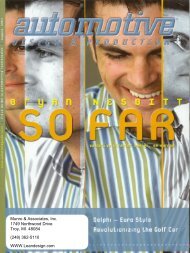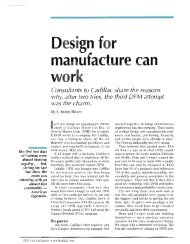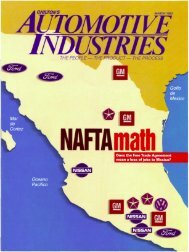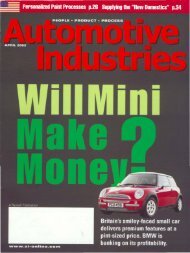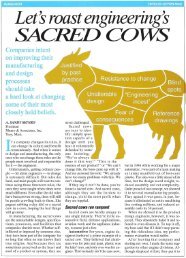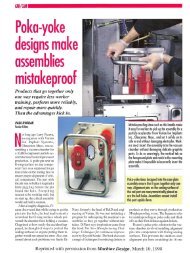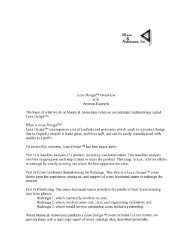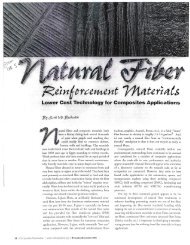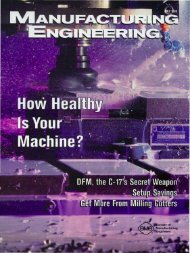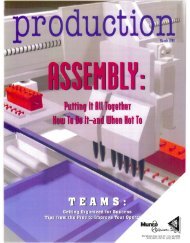Sandy Munro - Mining for Gold with Lean Design in Aircraft Interiors
Sandy Munro - Mining for Gold with Lean Design in Aircraft Interiors
Sandy Munro - Mining for Gold with Lean Design in Aircraft Interiors
Create successful ePaper yourself
Turn your PDF publications into a flip-book with our unique Google optimized e-Paper software.
one part, the part that most represents the work be<strong>in</strong>g done by the entire system, i.e. the top.<br />
All other assembled parts to the top are challenged <strong>for</strong> part value. Analyz<strong>in</strong>g each<br />
component, the follow<strong>in</strong>g are elim<strong>in</strong>ated:<br />
The Part Value Challenge: Good Part or Bad Part r<br />
1. Does It Have To Move<br />
2. Does It Have To Be A Fundamentally Different Material – (Side Arms r, Pivot r)<br />
3. When In Doubt, Throw It Out<br />
Poor Quality Drivers:<br />
• No Spr<strong>in</strong>gs<br />
• No Belts<br />
• No Fasteners – (Rivets r, Cl<strong>in</strong>ch Nuts r)<br />
The analysis shows only one part is necessary to satisfy BOB; it is the top.<br />
But this is not the best design!<br />
We found a way to decrease weight<br />
and <strong>in</strong>corporate the cloth and foam<br />
<strong>in</strong> one step! All <strong>for</strong> less money than<br />
the metal bracket alone!<br />
Redesigned One-Piece Armrest Bracket<br />
The creative process of bra<strong>in</strong>storm<strong>in</strong>g is used to generate redesign ideas to meet the new <strong>Lean</strong><br />
<strong>Design</strong> requirements. In this example, the break through is material selection. Unless the<br />
team is will<strong>in</strong>g to embrace new material choices and manufactur<strong>in</strong>g processes, the answer will<br />
never surface and the product improvement will be <strong>in</strong>significant. A one-piece plastic armrest<br />
bracket is a very feasible idea <strong>in</strong>volv<strong>in</strong>g only eng<strong>in</strong>eer<strong>in</strong>g, no development or research.<br />
Team<strong>Munro</strong> calls this Low Innovation.<br />
Low Innovation: These ideas require eng<strong>in</strong>eer<strong>in</strong>g only. The technology is not new to the<br />
product market and all team members feel com<strong>for</strong>table that, <strong>with</strong> m<strong>in</strong>imum test<strong>in</strong>g and<br />
validation the ideas can be <strong>in</strong>corporated.<br />
Medium Innovation: The medium risk idea requires development. It may be a technology<br />
utilized by another <strong>in</strong>dustry or a comb<strong>in</strong>ation of materials and processes unfamiliar to the<br />
team. This level can sometimes product patentable ideas and is the most likely level to<br />
implement.<br />
Stretch: These ideas are <strong>in</strong>ventions and require research, experimentation, test<strong>in</strong>g and<br />
validation. They are ideas that are on the edge of a new paradigm and <strong>in</strong> some cases thrust<br />
their companies to the <strong>for</strong>efront of their bus<strong>in</strong>esses. Almost always patentable, these ideas are<br />
the ones, which have the potential to leapfrog past the competition.<br />
6



